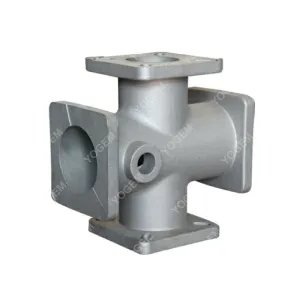The Process of Aluminum Casting
Aluminum casting is a process that transforms molten aluminum into solid objects with specific shapes and dimensions. It is a highly versatile technique used across industries such as automotive, aerospace, construction, and consumer goods. The process allows for the production of lightweight and corrosion-resistant aluminum components that offer exceptional mechanical properties.
The Process of Aluminum Casting
The process of aluminum casting typically involves the following steps:
a. Pattern Creation
A pattern, also known as a replica of the final part, is created using materials such as wood, plastic, or metal. The pattern represents the desired shape and features of the final aluminum component.
b. Mold Preparation
A mold is made by enclosing the pattern in a refractory material such as sand, plaster, or ceramic. The mold consists of two halves, known as the cope and the drag, which are assembled to create a cavity.
c. Melting and Pouring
Aluminum is melted in a furnace at high temperatures, typically around 700-900°C (1300-1650°F). Once molten, the aluminum is poured into the mold cavity through a gating system.
d. Cooling and Solidification
The molten aluminum cools and solidifies inside the mold, taking the shape of the pattern. The cooling time depends on the size and complexity of the component.
e. Mold Removal and Finishing
After solidification, the mold is opened, and the aluminum component is removed. Finishing processes such as trimming, grinding, and polishing are performed to achieve the desired surface finish and dimensional accuracy.
Types of Aluminum Casting Methods
There are several methods used for aluminum die casting, each suited for specific applications and production requirements. The common types include:
a. Sand Casting
Sand casting is the most widely used method for aluminum casting. It involves creating a mold using a mixture of sand and a binder. Sand casting offers flexibility, cost-effectiveness, and the ability to produce large and complex components.
b. Die Casting
Die casting utilizes reusable steel molds, known as dies, to produce high-volume aluminum components with excellent dimensional accuracy and surface finish. It is a precise and efficient method commonly used for automotive and electronic parts.
c. Investment Casting
Investment casting, also known as lost-wax casting, is a process that involves creating a wax pattern, coating it with ceramic, and then melting the wax to create a mold. It is suitable for intricate and detailed aluminum components.
d. Permanent Mold Casting
Permanent mold casting involves using a reusable mold made of steel or other materials. The molten aluminum is poured into the mold, allowing for the production of consistent and high-quality components.
Applications of Aluminum Casting
Aluminum casting finds a wide range of applications in various industries. Some common applications include:
a. Automotive Industry
Aluminum casting is extensively used in the automotive industry for engine components, transmission parts, wheels, and structural components. Its lightweight properties contribute to fuel efficiency and improved performance.
b. Aerospace Industry
The aerospace sector utilizes aluminum casting for aircraft components, including engine parts, structural elements, and interior components. Aluminum's high strength-to-weight ratio makes it ideal for aerospace applications.
c. Construction Industry
In the construction industry, aluminum casting is employed for architectural components, window frames, doors, and other structural elements. Aluminum's corrosion resistance and durability make it a preferred material in construction projects.
d. Consumer Goods
Aluminum casting is also used in the production of consumer goods such as kitchenware, furniture, sporting equipment, and electronic devices. Its versatility and aesthetic appeal make it a popular choice among manufacturers.
Aluminum casting is a versatile and efficient manufacturing process that enables the production of lightweight, strong, and corrosion-resistant aluminum components. Its applications span across industries, ranging from automotive and aerospace to construction and consumer goods. With its numerous advantages, such as design flexibility and cost-effectiveness, aluminum casting continues to play a significant role in modern manufacturing.

评论
发表评论